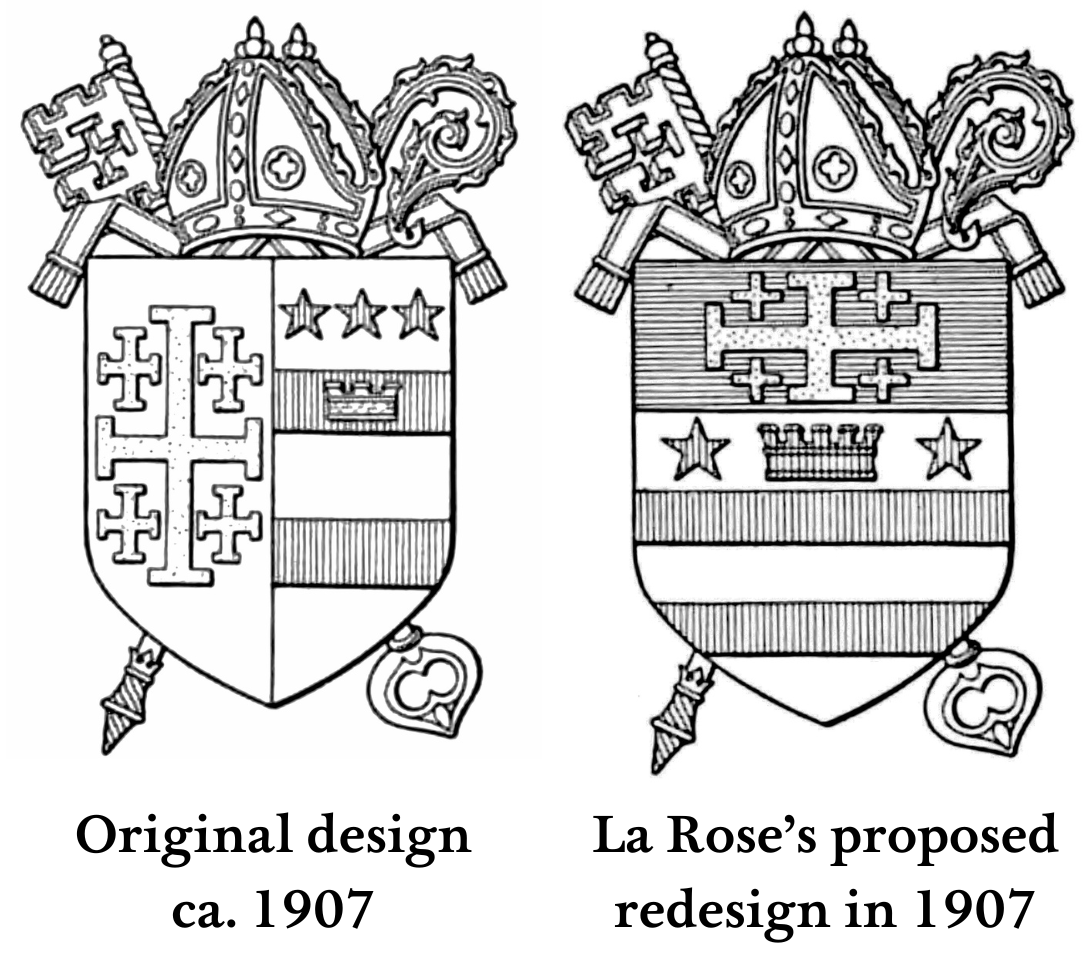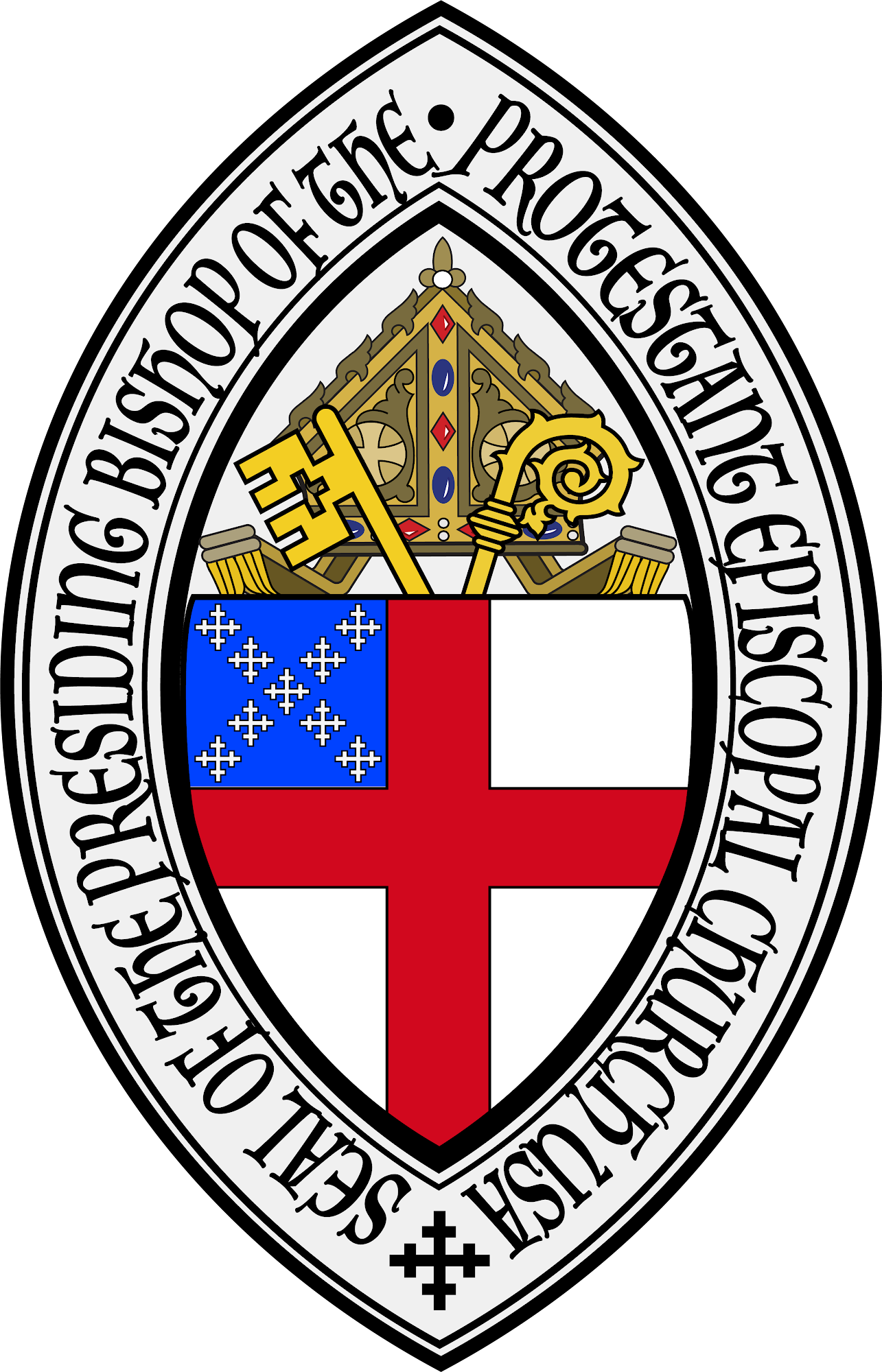 |
| The lush heraldry of Saint Thomas Church in New York City. Rendered by Chad Krouse, 2024. |
Whenever I find myself in New York City I hear the spiritual call from Saint Thomas Church, a holy refuge from the horns and packs of tourists milling about along Fifth Avenue. In the heart of midtown stands a resplendent temple of the Lord representing the best of the Episcopal Church's architectural and liturgical offerings (clearly I'm biased). Don't believe me? Just pop in for evensong and you'll see my point. Even if I'm rushed and unable to participate in one of the many liturgies, I light a candle and say a prayer in the presence of Our Lady of Fifth Avenue asking Mary to intercede on my behalf.
And the parish's motto is particularly striking and poignant--"O God my heart is ready." Certainly, however, there is a lovely heraldic component to all this well.
 |
| Bertram Goodhue's (1869-1924) design St Thomas Coat of arms Rendered by Chad Krouse, 2024. |
Following the disastrous fire which consumed the church in 1905, the firm Cram, Goodhue and Ferguson was selected to rebuild, and on a much grander scale. Both Gilliss (1927) and Krause (2001) credit Bertram G. Goodhue (1869-1924) for the majority of detail and designs found within the fabric, and given Goodhue's hand in the design for the great reredos, it is most likely that he is responsible for one of the earliest known designs of arms for the parish.
.png) |
| Image from Gilliss (1927) p. 21. |
Based on the illustration above from Gillis (1927), I offer the following blazon: Azure, on a cross throughout Or a spear palewise Gules, in dexter canton an open book and in sinister canton a carpenters square all Or. Krauss (2001) notes that there have been various versions of these arms in use, and without any known fixed blazon its up to the artist...
 |
| The arms engraved on the door of the parish house. Image from Gilliss (1927) p. 68. |
Two elements, at least, from these arms help identify the coat as one representing Saint Thomas. The spear which features most prominently, perhaps, references the saint's impalement. While seemingly gruesome, this visual reference is very much in keeping with Christian iconography. For the carpenter's square, Thomas is widely credited as a builder and the charge makes this reference clear.
The open book found in dexter canton is a reference to the Holy Bible. The first illustration above shows the entire book (pages and binding) to be gold, whereas the second image of the engraved lock does not. Giving the disagreement in data, I opted to leave the pages of the book white but edged gold. As a historical coat and no longer in use, I think this change is permissible As an aside, there is no geographical reference made in any of the coats of arms here.
No discussion of Saint Thomas' heraldry would be complete without acknowledging the parish's eleventh rector, The Rev. Canon John G.B. Andrew, OBE (1931-2014), who was affectionately called "Manhattan Pursuivant" due to his many designs of arms for US citizens. English born and ordained in the Church of England, Canon Andrew's love of liturgy helped further the parish's embrace of heraldry as a dignified decoration.
 |
| The arms of The Rev. Canon John G.B. Andrew, OBE (1931-2014) granted by the College of Arms. Rendered by Chad Krouse, 2024. |
The blazon for Canon Andrew's arms: Or, on a cross saltire Gules two feather quills between two roses all Argent and as many roses Gules.
Canon Andrew's arms were received as a grant from the College of Arms due to his UK citizenship. At present I do not have a date when he received these arms. His emblazonment above shows Father Andrew's honor as a canon of the Diocese of New York represented by the galero with three red tassels.
 |
| The arms of Saint Thomas Church designed and conveyed by the College of Arms. Rendered by Chad Krouse, 2024 |
Canon Andrew arrived at Saint Thomas in 1972, and just three years later, the parish received a coat of arms from London (Krauss, 287). Designed by the College of Arms in collaboration with Canon Andrew, the arms of Saint Thomas Church were conveyed by letters patent dated 1 December 1975. I've encountered the good canon's name regarding other US-based organizations with ties to the UK, for example, Andrew is listed as the petitioner on the letters patent for arms assigned to the College of Arms Foundation. Click here to read more about the arms of the College of Arms Foundation.
.png) |
| The full achievement of arms. Image source: Wright (2001). |
Krauss (2001) notes that as of 1975, Saint Thomas Church was the first parish in nearly 500 years to receive arms from the heralds' college. Blazon: Or, on a cross formy throughout Azure between four closed books saltirewise Gules garnished and a each charged with a long cross a spear Or headed Argent.
The tincture and metal scheme from Goodhue's design was carried forth in the herald's design as well as the spear. The field was reversed to gold and the cross made blue. The open book is now closed and "garnished" making the reference much clearer that this book is the Holy Bible. Geographically, the books saltirewise mimic the arms of a windsail and nicely reference New York in the most abstract of ways that only heraldry can accomplish.
 |
| The arms of Saint Thomas Choir School designed in 1963 by The Rev. Canon Edward N. West (1909-1990). Rendered by Chad Krouse, 2024. |
The Saint Thomas Choir School is a gem in the Church's crown, carrying forward the English boy-choir tradition in the American Church. Established in 1919, the school functions as a boarding school with the added bonus of supplying angelic voices to accompany the rich liturgies throughout the week.
Krauss (2001) credits the 1963 design for the Saint Thomas Choir School's coat of arms to The Rev. Canon Edward N. West (1909-1990) from the Cathedral of Saint John the Divine and the designer of the Anglican compass rose (p. 288).
 |
| The open and inscribed book of Saint Thomas Choir. Rendered by Chad Krouse, 2024. |
As the artist, I took some liberties when creating the open book for the choir school. Firstly, when a book is blazoned "proper" this usually means that the book is bound by leather and thus various shades of brown are traditionally used. Because the spear's handle was already "proper" with brown, I opted to use a red for the binding for contrast as well as to match the color of the closed books from the parish's arms.
 |
| An example of how la Rose used symbols to balance text. |
I also added a medieval-style whole note to the text for balance. I learned this method of decoration from none other than Pierre de Chaignon la Rose (1872-1941) who would insert various symbols on inscribed open books for this same reason. The two whole notes playfully reference the inscription, "sing to the Lord." I really liked how the book turned out.
For the inscription, I selected the font Luminari rather than Lombardic (as seen above in la Rose's example) or even my favorite Stempel Schneidler, believing the outlined version of Luminari rendered a clearly readable inscription with style.
Blazon: "Azure, on a [cross formy throughout Or a] spear palewise proper headed Argent surmounted by an open book displaying the text Cantate Domino" (Krauss, 2001, 288). The cross must have been accidentally omitted from the published blazon.
.png) |
| Banners of arms of Saint Thomas Church and its choir school. Rendered by Chad Krouse, 2024. |
I hope you'll come to appreciate the wonderful heraldry of Saint Thomas Church as much I have over the years. "O God my heart is ready."
Works Cited
Gilliss, F. L. (1927). A short description of the reredos, wood carvings and other objects of interest in Saint Thomas Church, New York City. Gilliss Press.
Krauss, H.E. (2001). Heraldry at Saint Thomas Church. In J. Robert Wright (Ed.), Saint Thomas Church Fifth Avenue (pp. 283-290). Eerdman's Publishing.










.png)














